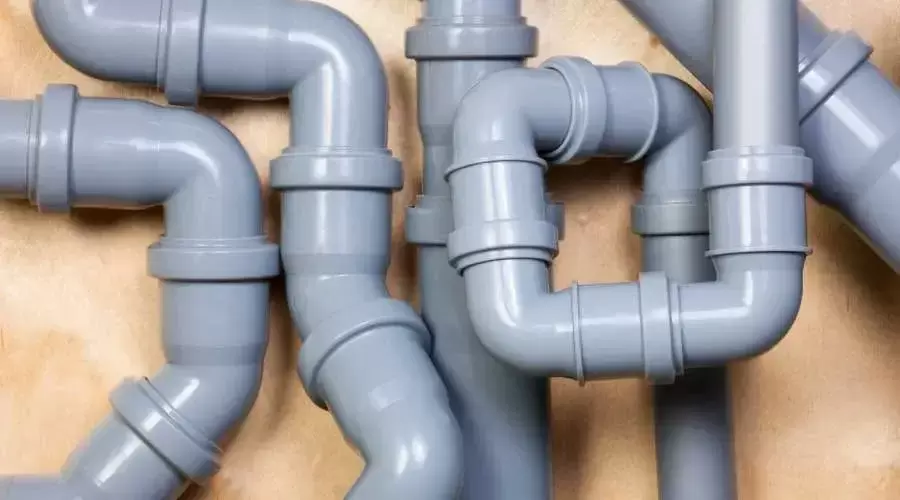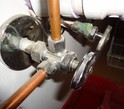|
One of your home's most essential components is its plumbing, therefore it's critical to understand when to replace them. Although the majority of pipes have a long lifespan, there are a few indicators that it could be time for an upgrade. Replacement Guide for the Majority of Common Pipes in the Home Have you spent a lot of time at your house? Do you currently reside in an old house? It may be time to consider replacing your plumbing pipes if the answer to any of these questions is yes. You could need to replace your pipes sooner rather than later, depending on the age of your house, the type of pipes that were initially placed, and how well they are currently functioning. Copper, galvanized steel, lead, and plastic are the four most popular materials used to create plumbing pipes.
What Is The Expected Life Of My Water Pipes? The estimated lifespans of some of the most popular plumbing components in your home are listed below: Supply Pipes Because they are always under strain, supply pipes experience significant wear and tear. Your property can experience water leaks when the water supply pipes deteriorate. It is important to keep in mind that they can endure for a long time before any leaking is noticed. The anticipated life expectancies for typical home supply pipes are as follows:
Plumbing Lines Faucet lines can live longer since they are not subject to the same pressure as the main supply pipes. When issues develop, they are typically resolvable. However, if the problems continue, it might be necessary to replace your faucet lines. Additionally, many replace their faucet lines for aesthetic reasons, such as;
Hoses for Machine Supply One of the most frequent and harmful leaks in every home is a leak from the washing machine. A minor leak may not seem like a big matter at first, but it can quickly grow into a much greater issue. It's crucial to fix any leaks as soon as you become aware of them. Your washing machine supply hoses should be changed every three years. Additionally, it's critical to check the hoses for the following things:
Sewage Lines Cast iron or PVC is typically used for drain lines. These materials are extremely strong and long-lasting. However, a few factors, such as damage from tree roots and damage from unfavorable weather, might reduce their longevity. The most popular drain lines have an average lifespan of:
Bathroom Pipes Knowing when to replace your toilet pipes is crucial because they are some of the most crucial pipes in your house. The average lifespans of various toilet components are as follows:
Handle: Although there isn't a set period of time for replacing the handle, it needs to be done if it becomes flimsy, the toilet doesn't flush completely, or if water starts to run on its own. Water Heater Every 10 to 15 years, a conventional water heater needs to be replaced. Tankless water heaters have a lifespan of 15-20 years, which is a little longer. It's time to replace your water heater if you detect any of the following issues:
As you can see, there is a large variation in the longevity of various types of pipes. How long your pipes survive might vary greatly depending on the materials used and how they are installed. But you may help your pipes last longer if you keep an eye out for signs of deterioration and take care of any issues that crop up. For long-lasting plumbing pipes, contact us right now!Contact Elizabeth Drain Service right away if you require plumbing assistance or if a replacement is necessary. Our professionals are more than delighted to offer advice on pipe selection and installation for your residence. Your home will have the plumbing it needs to function properly for many years to come thanks to our work. Contact us at (908) 988-0365 right away!
0 Comments
Leave a Reply. |
Archives
March 2024
Categories
All
|
- Plumbers / Drain Service
-
Plumbing Services
- Boiler Repair - Replace
- Clogged Drains and Sewer Lines
- Faucet Replacement
- Elizabeth Furnace Installation & Replacement
- Furnace Service & Maintenance
- General Plumbing Repairs
- Heat Pump Service & Maintenance
- Hot Water Heater Repair Replace
- Humidity Control & Dehumidification
- New Supply and Drain Lines
- Toilet and Vanity Replacement
- About Us
- Privacy Policy
- Contact Us
-
Areas We Service
- Plumber Bayonne
- Plumber Belleville
- Plumber Carlstadt
- Plumber Edgewater
- Plumber Hoboken
- Plumber Jersey City
- Plumber Kearny
- Plumber Lodi
- Plumber Lyndhurst
- Plumber Newark
- Plumber North Arlington
- Plumber North Bergen
- Plumber Palisades Park
- Plumber Ridgefield Park
- Plumber Rutherford
- Plumber Secaucus
- Plumber Teaneck
- Plumber Union City
- Plumber West New York
- Plumber Weehawken
- Blog
|
Elizabeth Plumbers and Drain Service

162 Elmora Ave. #323
Elizabeth, NJ 07202 elizabethdrainservice@gmail.com www.elizabethdrainservice.com (908) 988-0365 |
Elizabeth Drain Service is a full service and licensed plumbing contractor that specializes in drain clearing and sewer backups and repairs. Call us today if you have any plumbing needs.
|


 RSS Feed
RSS Feed



